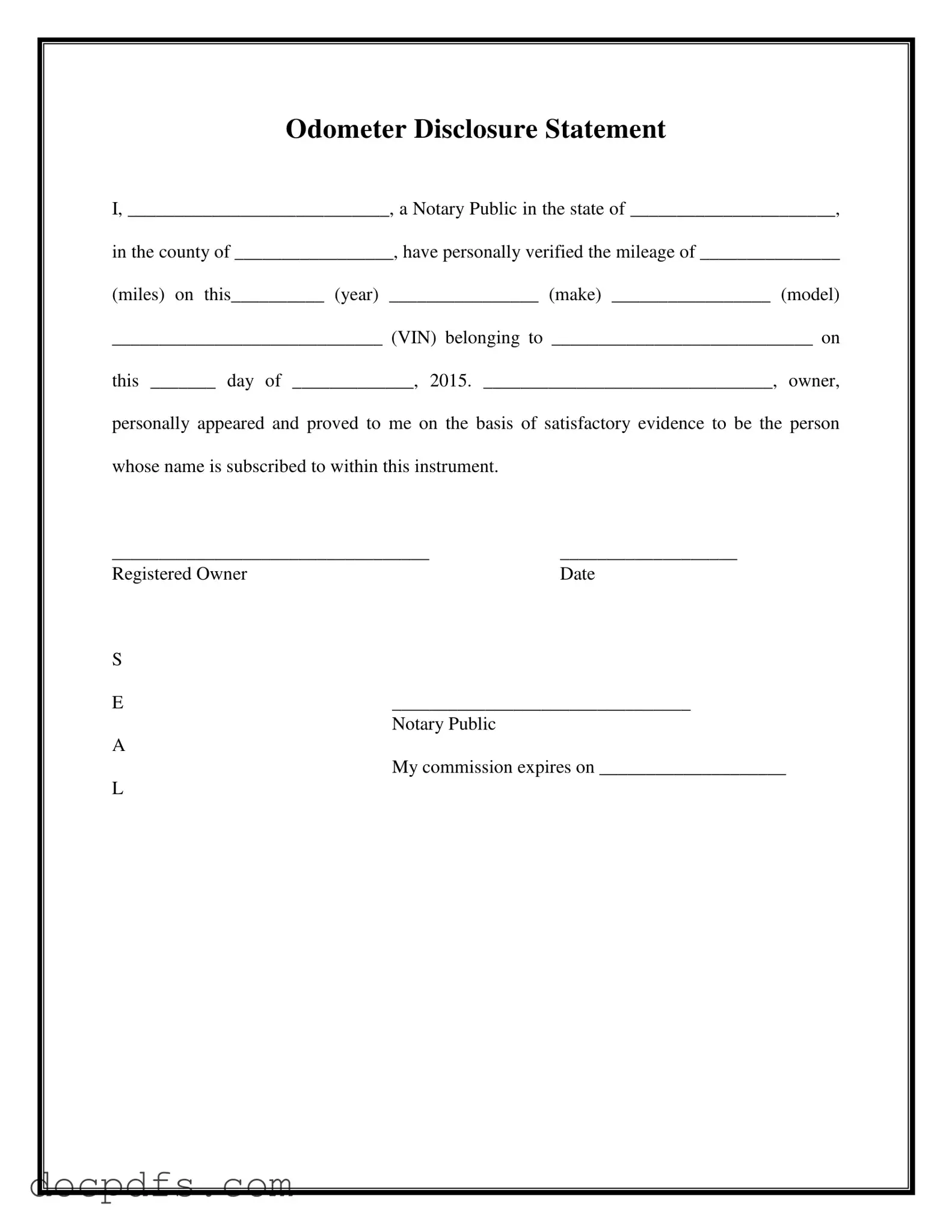What is a Notarized Odometer Statement?
A Notarized Odometer Statement is a legal document that certifies the mileage on a vehicle at the time of sale or transfer. It is typically required when selling a vehicle to ensure that the mileage is accurately disclosed to the buyer. This statement must be signed in the presence of a notary public, who verifies the identity of the person signing the document.
Why is a Notarized Odometer Statement important?
This statement helps protect both the buyer and the seller. For buyers, it provides assurance that they are not purchasing a vehicle with rolled-back mileage, which can affect the vehicle's value and safety. For sellers, it serves as a record that they disclosed the correct mileage, which can protect them from future claims of fraud.
Who needs to complete a Notarized Odometer Statement?
Typically, the seller of the vehicle is responsible for completing the Notarized Odometer Statement. However, in some cases, a representative of the seller may also complete it if they have the proper authorization. Buyers should also be aware of this document, as it is a crucial part of the transaction.
The Notarized Odometer Statement requires several pieces of information, including:
-
The name of the notary public
-
The state and county where the notarization takes place
-
The current mileage of the vehicle
-
The year, make, model, and VIN (Vehicle Identification Number) of the vehicle
-
The name of the vehicle owner
-
The date of the notarization
How do I find a notary public?
Finding a notary public is relatively easy. Many banks, law offices, and shipping stores offer notary services. Additionally, you can search online for notary services in your area. It’s advisable to call ahead and confirm their availability and any fees they may charge.
Is there a fee for notarizing the Odometer Statement?
Yes, most notaries charge a fee for their services. The amount can vary based on state regulations and the notary's own pricing structure. Generally, fees are modest, often ranging from $5 to $15 per signature. It’s wise to inquire about the cost before your appointment.
What happens if the Odometer Statement is not notarized?
If the Odometer Statement is not notarized, it may not be considered valid in certain jurisdictions. This can lead to complications during the vehicle title transfer process. Buyers might be hesitant to complete the transaction without a notarized statement, fearing potential issues with the vehicle’s mileage. To avoid these problems, it’s best to ensure that the statement is properly notarized before completing the sale.
